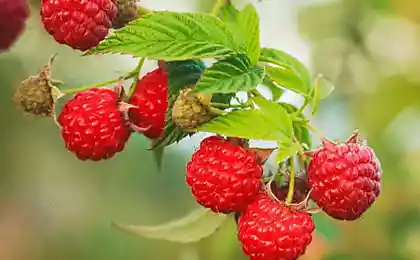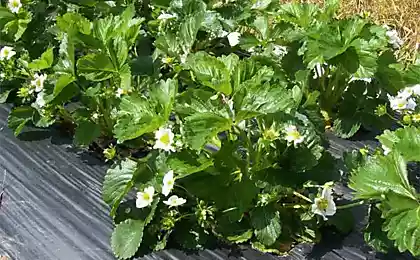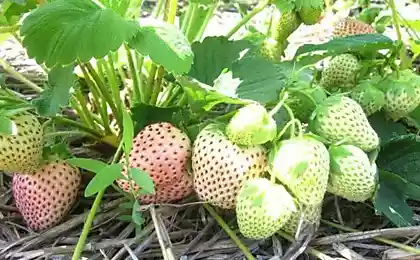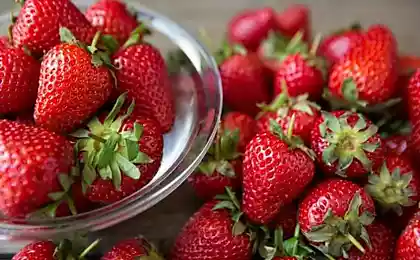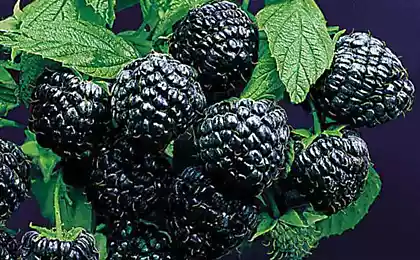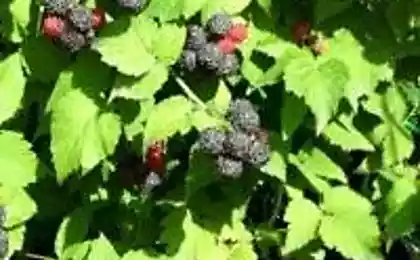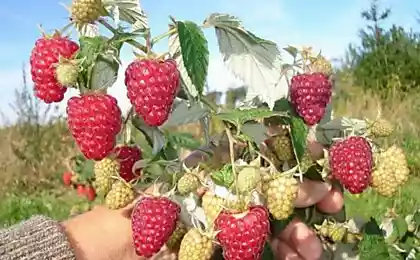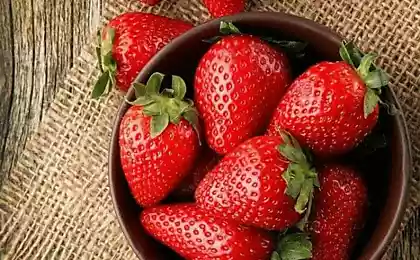524
Why black rot affects berries of strawberry, raspberry, BlackBerry
Black rot is caused by the fungus Rhizopus nigricans Ehr. from the order Mucorales of the class Zygomycetes. Lesions occur on overripe berries, especially during storage. Black rot affects berries of raspberry, strawberry, BlackBerry.Why are there such diseases berries? Let's razberetes.
Affected berries appear whitish-grey layer of mycelium of the pathogen with black beads (Chernogolovka mold). Black balls represent sporangia with sporangiospores of the pathogen with which the fungus spreads. Subsequently, the plaque turns into a black dry powdery mass of spores of the fungus. Infected berries rot. Rot of the berries is places.
The development of the fungus is facilitated by high temperature and humidity. The fungus can infect berries through the injuries. Therefore, the main measure to combat black rot is a careful treatment of the berries at harvest and packing of crop. Along with this, carry out the same events as in the fight against Botrytis.
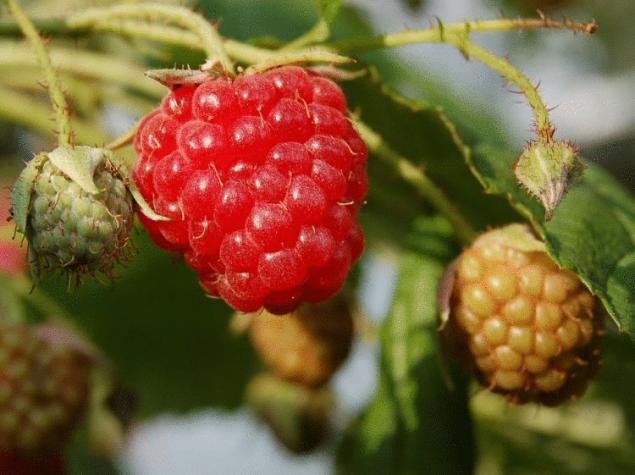
Disease berries occur due to lack of certain elements
Non-communicable diseases of strawberry is often associated with the lack of essential macro - and micronutrients. General character and degree of manifestation of deficiency symptoms of nutrients in strawberries a little different from the outward signs of fasting other crops.
The lack of nitrogen in the initial period is characterized by the appearance of a yellowish-green color on older leaves and reduced size of young leaves. Plants lacking nitrogen, form a relatively small number of whiskers. In acute nitrogen deficiency, younger leaves also become yellowish-green in color and older leaves are more yellow and the edges of the leaf blades appears red pigmentation. Following this stage of fasting develops a burn and the old leaves situated near the root collar, dry up.
The phosphorus deficiency of strawberries is manifested as an abnormally dark green color of leaves, caused by accumulation in the superficial tissues of the anthocyanin. Later reduced size of leaves, dark tone of color of the leaves intensifies and turns into copper-crimson. On the leaves appear mottling, old leaves wither.
Lack of potassium leads to burn the edges of the leaves. This form of burn is different from burns or necrosis of the edges of the leaves caused by lack of nitrogen that burns from the lack of nitrogen is preceded by a significant yellowing and reddening of leaf tissue. A burn from a lack of potassium usually develops on the leaves of middle age and captures not only their edges. The color of the unaffected part of the leaf blade with the burn can usually be either green, or have a more or less pronounced purplish-red color.
Lack of calcium affects the kidney or of the growing point of the root neck, which die off, and subsequent plant growth may occur only at the expense of the lateral buds. At the base of young leaves or on the whole surface may appear red-brown pigmentation. With the development of calcium starvation increases root damage, die off the roots.
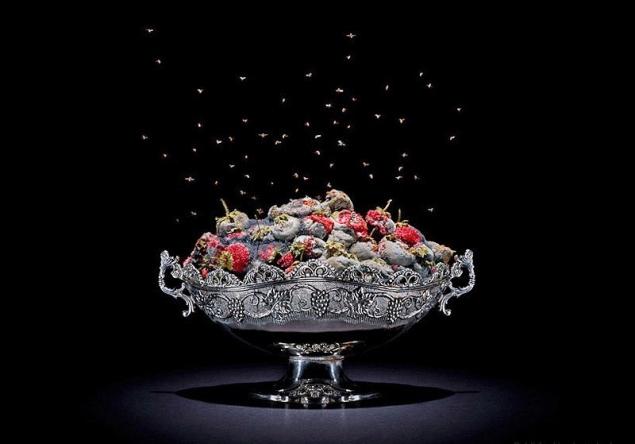
Magnesium deficiency causes abnormal development of leaves. They become thin, become bright green, quite unusual for healthy plant color. In the future there is spotting, beginning at the edges of old leaves, it develops until, until secretiruetsa the whole lamina. Painting affected areas usually differs slightly reddish, grey-brown tint. First nekrotizirovannye withered lower leaves, and then the young top leaves.
The black parts of the flowers of strawberries appear to be the result of damage to late spring frosts. Usually suffer from frost the first flowers, and stronger damage ranotsvetuschie varieties. Damaged flowers die, do not produce berries.
To protect flowers from damage it is recommended that with the threat of frost or make smoke in the area, or spend copious irrigation of the plantation. Small areas can be covered strawberries content (lutrasil, etc.).
Source: selxozinfo.com.ua/
Affected berries appear whitish-grey layer of mycelium of the pathogen with black beads (Chernogolovka mold). Black balls represent sporangia with sporangiospores of the pathogen with which the fungus spreads. Subsequently, the plaque turns into a black dry powdery mass of spores of the fungus. Infected berries rot. Rot of the berries is places.
The development of the fungus is facilitated by high temperature and humidity. The fungus can infect berries through the injuries. Therefore, the main measure to combat black rot is a careful treatment of the berries at harvest and packing of crop. Along with this, carry out the same events as in the fight against Botrytis.

Disease berries occur due to lack of certain elements
Non-communicable diseases of strawberry is often associated with the lack of essential macro - and micronutrients. General character and degree of manifestation of deficiency symptoms of nutrients in strawberries a little different from the outward signs of fasting other crops.
The lack of nitrogen in the initial period is characterized by the appearance of a yellowish-green color on older leaves and reduced size of young leaves. Plants lacking nitrogen, form a relatively small number of whiskers. In acute nitrogen deficiency, younger leaves also become yellowish-green in color and older leaves are more yellow and the edges of the leaf blades appears red pigmentation. Following this stage of fasting develops a burn and the old leaves situated near the root collar, dry up.
The phosphorus deficiency of strawberries is manifested as an abnormally dark green color of leaves, caused by accumulation in the superficial tissues of the anthocyanin. Later reduced size of leaves, dark tone of color of the leaves intensifies and turns into copper-crimson. On the leaves appear mottling, old leaves wither.
Lack of potassium leads to burn the edges of the leaves. This form of burn is different from burns or necrosis of the edges of the leaves caused by lack of nitrogen that burns from the lack of nitrogen is preceded by a significant yellowing and reddening of leaf tissue. A burn from a lack of potassium usually develops on the leaves of middle age and captures not only their edges. The color of the unaffected part of the leaf blade with the burn can usually be either green, or have a more or less pronounced purplish-red color.
Lack of calcium affects the kidney or of the growing point of the root neck, which die off, and subsequent plant growth may occur only at the expense of the lateral buds. At the base of young leaves or on the whole surface may appear red-brown pigmentation. With the development of calcium starvation increases root damage, die off the roots.

Magnesium deficiency causes abnormal development of leaves. They become thin, become bright green, quite unusual for healthy plant color. In the future there is spotting, beginning at the edges of old leaves, it develops until, until secretiruetsa the whole lamina. Painting affected areas usually differs slightly reddish, grey-brown tint. First nekrotizirovannye withered lower leaves, and then the young top leaves.
The black parts of the flowers of strawberries appear to be the result of damage to late spring frosts. Usually suffer from frost the first flowers, and stronger damage ranotsvetuschie varieties. Damaged flowers die, do not produce berries.
To protect flowers from damage it is recommended that with the threat of frost or make smoke in the area, or spend copious irrigation of the plantation. Small areas can be covered strawberries content (lutrasil, etc.).
Source: selxozinfo.com.ua/
